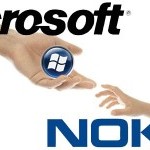A little while back, someone named Dr. C commented here at Small Business Trends saying: ”I’m still not sure how hashtags are being used, or how to use them, or when to use them, or what the significance is in using them… totally confused ….” We hear you, Dr. C — hashtags are baffling to those who do not spend a lot of time online or who are new at social media.
So today we’re going to tackle the question “What is a hashtag?” in plain language. We will also address the business significance of hashtags, and how hashtags can help you in marketing.
What is a Hashtag?
A hashtag is a label for content. It helps others who are interested in a certain topic, quickly find content on that same topic.
A hashtag looks something like this: #MarathonBombings or #SmallBizQuote.
Hashtags are used mostly on social media sites. They rocketed to fame on Twitter. But now you can use hashtags on other social platforms, such as Instagram, Facebook, Pinterest and Google+.
Anyone sharing content on a relevant topic can add the hashtag label to their message. Others searching for that topic, can search for that label to find other messages on that same social media platform.
For example, during the horrific Boston Marathon bombings in the spring of 2013, several hashtags were used. They proved invaluable for providing and following up-to-the-minute news about the bombings. In fact, several big news stories in recent years have been amplified and added to with citizen reports and amateur video and photographs.
Hashtags for such situations also provide a way for the public to express their sentiment – something many of us feel compelled to do in the case of a disaster. When it comes to natural disasters, a hashtag is like an information lifeline. We cling to it, to learn more about the event and provide an emotional outlet.
Hashtags, however, are not limited to big news stories. Small business marketers have also cracked the code and figured out inventive ways to use hashtags. We’ll discuss the marketing uses of hastags more below.
But first, let’s talk about some nuts and bolts to understand hashtags better.
How To Create a Hashtag
Hashtags are simple things. There are just a few technical requirements to know:
No Spaces Allowed
A hashtag can be a single word, an abbreviation, an invented combination of letters and numbers, or a phrase. If it is a phrase, there can be no spaces between words. All letters and numbers must run together without spaces in a hashtag. You can’t have punctuation or symbols in your hashtag (other than the # symbol at the beginning). Numbers are OK, but you must also have at least one letter with the numbers — hashtags cannot consist entirely of numbers.
Start With the # Symbol
A hashtag always starts with the symbol # followed directly by letters and sometimes numbers. Fun factoid: depending on where you are in the world, the symbol # is called various things. In the United States and Canada, it is called a number sign or sometimes a pound sign.
But in other places, such as the United Kingdom and Ireland, that # symbol is called a hash sign. So you see, that’s how these labels came to be called “hashtags.” In essence, a hashtag is a label that consists of a word or phrase tag with a hash symbol in front of it.
Create Your Own Hashtag
Anyone can create a hashtag. I’ve created numerous hashtags over the years. You could create one of your own or several, if you wish.
All you do to create a hashtag is think it up. Then start using it in your messages.
Usually you add it to the end of messages. But you could add it anywhere in the message that makes sense, as long as it’s readable.
You are not required to register a hashtag anywhere. There are some hashtag directories around, but they unofficial, outdated and usually not worth the trouble.
Make Hashtags Unique
If you think you’ve invented a hashtag that’s completely new, do a search first on the social platform you intend to use it on. We find that about 25% of the time, the hashtag we want to use is already being used for some other purpose.
Now, there’s no hashtag police. So technically, there’s nothing stopping you from using a hashtag already in use. But doing so will cause confusion, or worse, be seen as an attempt to hijack a discussion just to gain attention. If the hashtag you want is in use, it’s best to go back to the drawing board.
Don’t forget to check usernames, too. Make sure your intended hashtag is not the same as an existing username on a social network. Here again, it may cause confusion to use a hashtag such as #DellSMB if there is a user @DellSMB. Besides, the user probably would interpret it as an attempt to hijack their brand name. You could find yourself on the receiving end of a cease-and-desist letter, or with the social platform taking action for violating someone’s trademarked name, if the issue is taken to extremes.
One exception to the uniqueness concept: some people use general topics as hashtags, such #Marketing or #Sales. We discuss the use of general topics below — in essence no one “owns” a general topic hashtag.
Make Hashtags Easy to Remember and Understand
Keep hashtags as short as possible. That’s especially important for Twitter where you have a limited character count. It’s best if a hashtag is an understandable word, phrase or abbreviation.
Hashtags that are long, hard to pronounce or hard to remember, will be hard for people to use, too. You can’t go wrong with something short and easy to remember.
On Google+, you get an added benefit: Google’s technology will automatically assign a hashtag to your content, without you doing anything. You can tell it not to add the hashtag, if you prefer, so you can manually add your own hashtags.
How to Use a Hashtag That Already Exists
Rather than creating your own hashtag, sometimes you want to enter a discussion around a topic where a hashtag already exists. You would simply add that hashtag somewhere (usually at the end) of your Twitter tweet or other social media update.
By doing so, you are sharing your content related to that same topic. By adding the hashtag to your content, you are saying “Hey, I want to chime in on this discussion.” Others interested in that topic will see your content.
When Not to Use a Hashtag
Avoid hashtag pollution. This is using multiple hashtags in a single message. Any more than two hashtags in a message makes it difficult to read.
It’s considered bad etiquette to add a hashtag to an unrelated message just to get attention. Always make sure your content is relevant to the hashtag you use. Otherwise, people may report you for being a spammer, or respond testily.




























Join Conversations